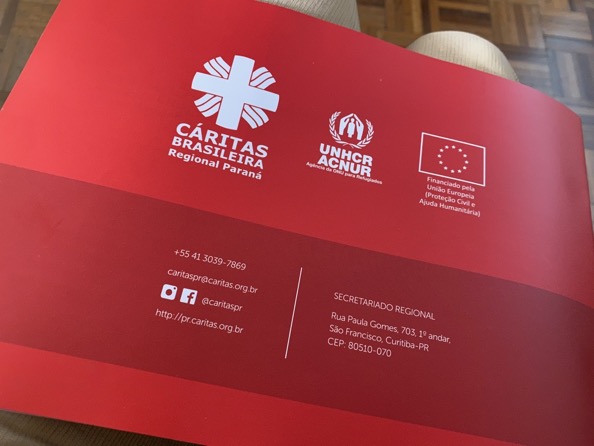Venezuela Refugees' Response in Brazil 🇧🇷

Curitiba, Brazil; February 2020
In February 2020, I travelled to Brazil to visit colleagues from UNHCR and Caritas, exploring their projects that support Venezuelan migrants in the country. The trip was an opportunity to see firsthand how Brazil was addressing protection, shelter, social integration, and long-term solutions for those seeking refuge.
I left deeply impressed—not only by the dedication of humanitarian workers but by Brazil itself. Despite facing significant internal social and economic challenges, the country remains open and welcoming to foreigners. More than that, Brazil does it comprehensively—involving civil society, NGOs, and local governments, and having one of the most advanced pro-refugee legal frameworks in the world.
Beyond work, this trip also allowed me to experience the unique character of three different cities—São Paulo, Curitiba, and Brasília—each with its own identity, energy, and history. Thanks to my colleagues who hosted me and guided me, I was able to truly immerse myself in these places.
São Paulo – The Heart of Brazil’s Diversity
I began my journey in São Paulo, a city that never stops moving. It is Brazil’s economic powerhouse, but beyond the towering skyscrapers and constant flow of traffic, I discovered a city of rich cultural diversity. São Paulo is home to immigrant communities from all over the world, including the largest Japanese community outside Japan.
Walking through the streets, I felt the multicultural energy—from Italian cantinas in Bixiga to Korean barbecue spots in Bom Retiro. The city’s art scene also left a strong impression, especially the famous Avenida Paulista and the São Paulo Museum of Art (MASP), whose modern architecture stands in striking contrast to the city’s historical landmarks.
Curitiba – A Surprising Connection to Poland
Curitiba was one of the most touching parts of the trip. While I had long heard about its innovative urban planning and green spaces, I was particularly moved by learning about its Polish community.
Polish immigrants arrived in Curitiba in large numbers in the late 19th and early 20th centuries, leaving a lasting mark on the city’s culture. I visited Bosque do Papa (Pope’s Woods and Polish Memorial), a peaceful forested park dedicated to Pope John Paul II, honouring the Polish heritage of the region. Seeing wooden houses, traditional folk art, and Polish-language signs in the heart of Brazil was unexpected yet deeply familiar—it felt like a small piece of Poland had been transplanted across the world.
Brasília – A Vision of the Future
The last stop on my trip was Brasília, Brazil’s unique, futuristic capital. Unlike São Paulo and Curitiba, Brasília is a planned city, designed in the 1950s to be a symbol of modernity and progress. Its layout, shaped like an airplane from above, and its monumental architecture were unlike anything I had seen before.
Exploring the Esplanada dos Ministérios, I admired the modernist designs of Oscar Niemeyer, especially the Cathedral of Brasília, with its stunning curved structure and stained-glass interior. The city’s atmosphere was different—calmer, more institutional, yet undeniably grand.
Reflections on an Eye-Opening Visit
This trip was more than just a mission—it was a chance to see Brazil’s commitment to humanitarian efforts, despite its own internal struggles. The way the government, civil society, and NGOs worked together to support Venezuelan migrants was truly inspiring.
Beyond that, experiencing Brazil’s diverse cities, its cultural richness, and the unexpected Polish heritage in Curitiba made the journey even more special. This visit reinforced what I had always heard—Brazil is not just a country, but a world of its own, full of contrasts, warmth, and resilience.
Click here to access the album.
